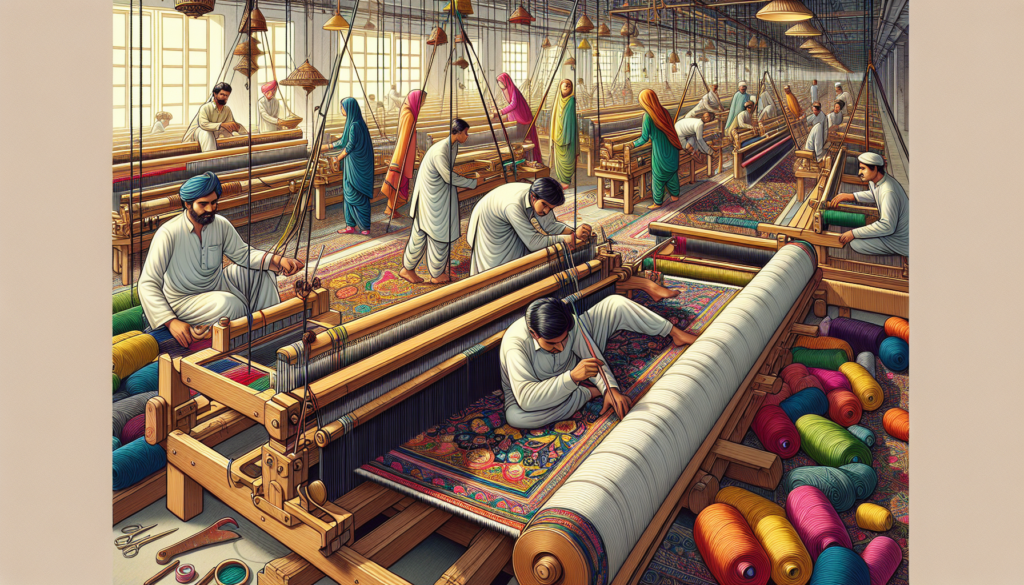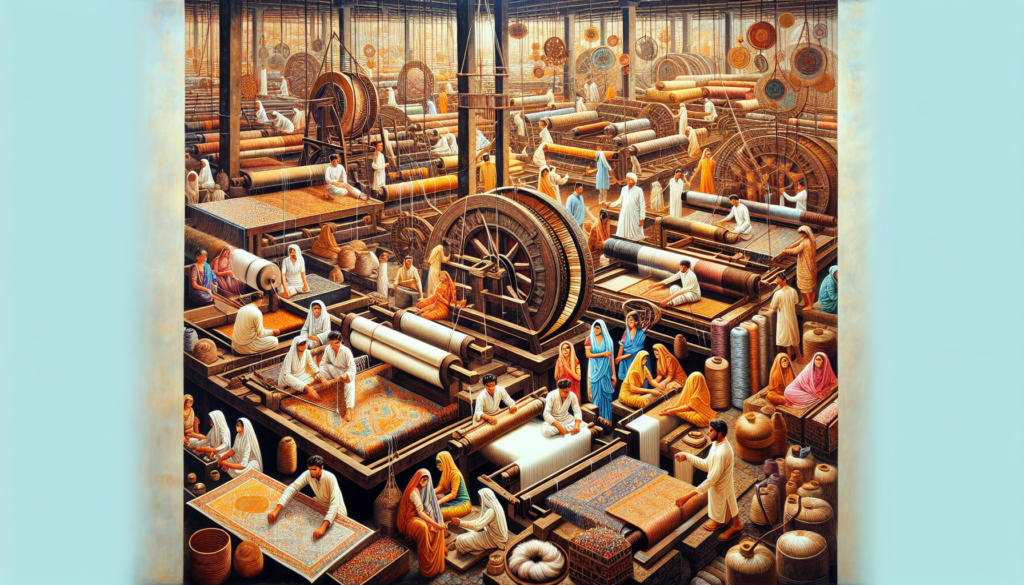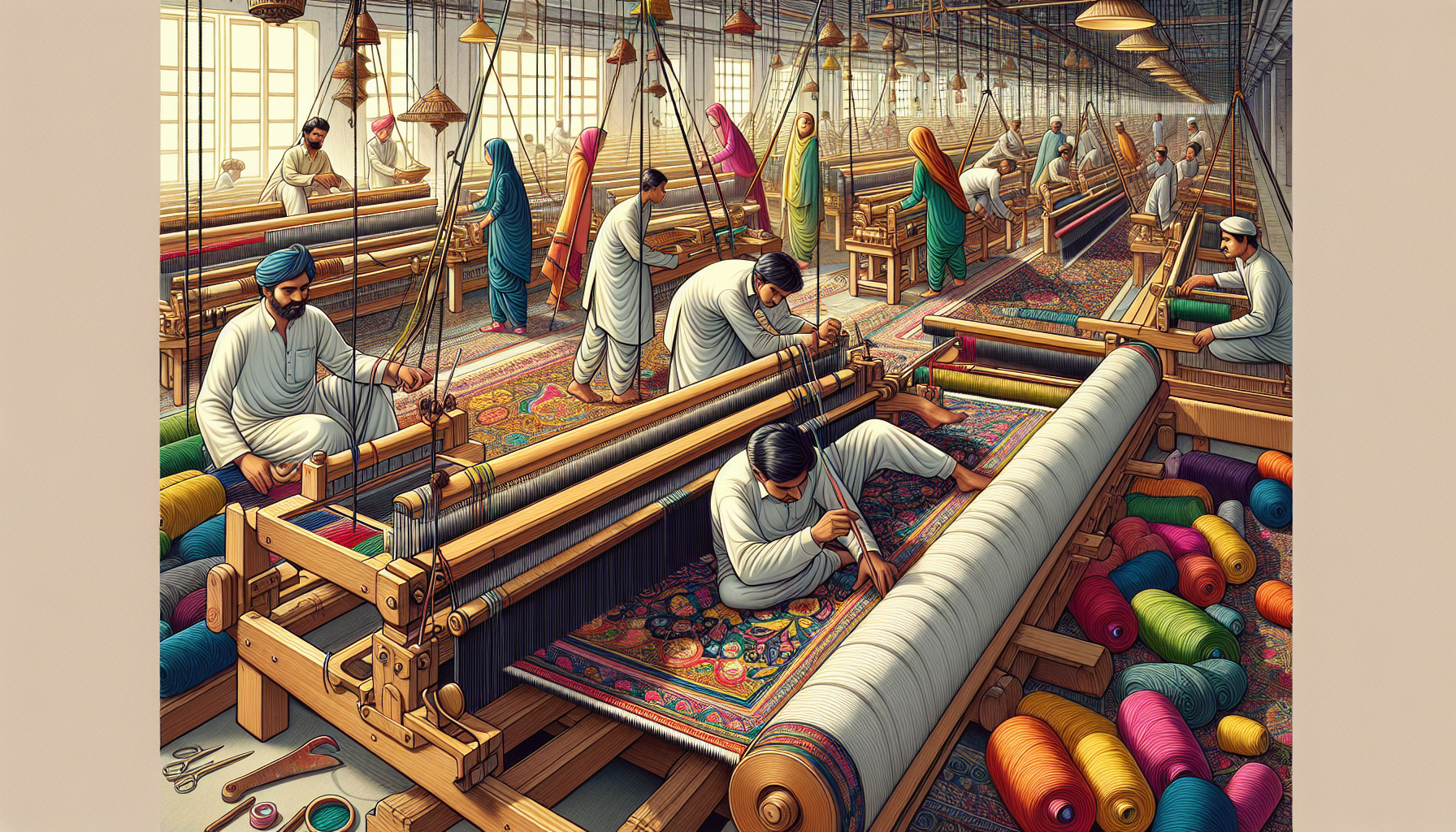In this article, we will explore the intriguing topic of global quality standards in rug production, specifically focusing on how India measures up. With a wealth of information, we aim to provide you with valuable insights and answers to your burning questions. Join us as we delve into the world of rug production, shedding light on the standards that shape the industry and unveiling how India’s practices compare to those around the globe. Let’s embark on this enlightening journey together and discover the wonders of rug production in India.
Overview of Global Quality Standards in Rug Production
Quality standards play a crucial role in the rug production industry worldwide. These standards ensure that rugs meet specific criteria in terms of materials, construction, and design, ensuring that consumers receive products of a certain level of quality. In this article, we will explore the key global quality standards in rug production and delve into India’s rug production industry, including its size, position in the global market, and the challenges it faces. Additionally, we will examine the quality standards set by India and how they compare to international standards. We will also consider expert opinions on India’s rug quality standards and assess the impact of these standards on India’s rug exports. Finally, we will discuss measures taken to improve quality standards in India’s rug production and the importance of maintaining and enhancing these standards.

India’s Rug Production Industry
India has a significant presence in the global rug production industry. The country boasts a rich tradition of rug weaving and is widely recognized for its skilled artisans and intricate designs. The size of India’s rug production industry is substantial, employing a large number of individuals, particularly in rural areas where rug weaving is a primary source of livelihood. Moreover, India’s rug production industry has experienced consistent growth over the years, as demand for handcrafted rugs continues to soar in both domestic and international markets.
Despite its strong position in the global market, India’s rug production industry faces several challenges. One major hurdle is the competition from other rug-producing countries that offer similar products at lower prices. Additionally, there is a need to adhere to global quality standards to maintain a competitive edge and ensure customer satisfaction.
Quality Standards in India’s Rug Production
To address the need for quality standards, India has established national standards for rug production. These standards outline the specific requirements for materials, construction, and design, aiming to guarantee that rugs meet certain quality benchmarks. Compliance with these standards is essential for rug manufacturers to receive certification, demonstrating their adherence to the prescribed guidelines.
Comparing India’s quality standards to international standards reveals both similarities and differences. While the basic principles of quality remain consistent, there may be variations in specific requirements and testing methods. It is crucial for India’s rug production industry to align its standards with international norms to cater to global markets and meet the expectations of international buyers.
International Rug Quality Standards
Apart from India’s national standards, international rug quality standards play a vital role in rug production. Let’s explore some key quality standards set by major markets for rugs:
European Union (EU) Quality Standards for Rugs
The EU has established stringent quality standards for imported rugs, focusing on aspects such as fiber content, flammability, pesticide usage, and colorfastness. Compliance with these standards is necessary for rug manufacturers looking to export their products to EU member countries. The EU standards aim to protect consumers, ensuring that rugs meet specific safety and quality requirements.
United States Quality Standards for Rugs
The United States also maintains its own set of quality standards for rugs, particularly in terms of flammability, fiber content, and labeling requirements. Rugs imported into the U.S. must meet these standards to ensure the safety and satisfaction of American consumers. Compliance with U.S. quality standards is vital for India’s rug production industry to sustain its exports to this significant market.
Other Major International Quality Standards
Apart from the EU and the U.S., there are various other international organizations and markets that set quality standards for rugs. These standards are often in line with the principles of safety, durability, and aesthetic appeal. Rug manufacturers must familiarize themselves with these standards to expand their presence in international markets and cater to the diverse demands of customers worldwide.

Key Differences in Quality Standards
When comparing quality standards, several key differences become apparent across different markets. These differences can be categorized into material standards, construction standards, and design and pattern standards.
Material Standards
Different regions may have varying requirements for the types of materials used in rug production. For example, certain standards may emphasize the use of natural fibers, while others may allow for a wider variety of synthetic fibers. The choice of materials can significantly impact the quality, durability, and environmental sustainability of rugs.
Construction Standards
Construction standards encompass factors such as weaving techniques, knot density, and pile height. These standards influence the overall quality, appearance, and longevity of rugs. Different regions may prioritize specific construction techniques or set limitations on certain aspects of rug production to ensure consistency and adherence to quality benchmarks.
Design and Pattern Standards
Design and pattern standards are subjective and can vary greatly across different markets. While some standards may prioritize traditional motifs and techniques, others may embrace modern or innovative designs. Aligning design and pattern standards with market trends and consumer preferences is essential for rug manufacturers to cater to different target demographics effectively.
Comparative Analysis of India’s Rug Production
India’s rug production industry has several strengths that contribute to its success in the global market. The country’s long-standing tradition of rug weaving has resulted in a pool of highly skilled artisans with a deep understanding of traditional techniques and designs. Indian rugs are renowned for their intricate patterns, vibrant colors, and exceptional craftsmanship. Moreover, Indian rugs often exhibit a unique cultural character that appeals to consumers worldwide.
However, India faces challenges in adhering to global quality standards consistently. The variations between India’s national standards and international standards can result in additional costs for manufacturers trying to meet different requirements. Moreover, some manufacturers may struggle to update their production processes and adopt new technologies to align with evolving quality standards.
To address these challenges, India has taken several steps to improve quality standards in rug production. Industry associations and government bodies have provided training and support to small-scale weavers and manufacturers, aiming to enhance their skills and knowledge. Additionally, technological advancements have been introduced to streamline production processes and improve quality control measures.
Expert Opinions on India’s Rug Quality Standards
Industry experts have expressed their opinions on India’s rug quality standards, shedding light on the strengths and areas for improvement. Some experts believe that India’s traditional rug weaving techniques and skilled artisans give its rugs a unique edge in the market. However, concerns have been raised regarding the need for better compliance with international quality standards to meet the expectations of global buyers.
Assessing India’s competitiveness in the global rug market requires a comprehensive analysis of factors such as pricing, design, quality, and customer satisfaction. While India’s rug production industry has made significant strides, there is still work to be done to compete effectively and earn a prominent position in the global market.
Impact of Quality Standards on India’s Rug Exports
Quality standards have a profound impact on India’s rug exports. Meeting international quality standards allows Indian rug manufacturers to access larger markets and establish strong relationships with global buyers. Compliance with these standards enhances the credibility and reputation of Indian rugs, assuring customers of their quality and reliability.
Yet, there are barriers that India faces in exporting rugs to markets with high quality standards. Some hurdles include the costs associated with compliance and certification processes, as well as the need to establish comprehensive quality control mechanisms. Manufacturers must invest in advanced technology and training to ensure consistent adherence to quality standards, which can pose challenges for small and medium-sized enterprises.
Improving Quality Standards in India’s Rug Production
To enhance quality standards in India’s rug production, various measures have been implemented by the industry and the Indian government. Rug manufacturers have embraced technologies such as computer-aided design and advanced weaving machinery to improve productivity and quality control. Government initiatives have also been launched to provide financial assistance, training, and capacity-building programs for weavers and manufacturers.
Collaborations with international organizations have further facilitated the exchange of knowledge, best practices, and quality standards. Such partnerships encourage the implementation of global quality standards in Indian rug production and support India’s rug industry in competing effectively in international markets.
Conclusion
India’s rug production industry holds a significant position in the global market, with its rich heritage of rug weaving and skilled artisans. However, to succeed in the highly competitive global market, it is crucial for India to adhere to global quality standards consistently. Compliance with these standards not only ensures customer satisfaction but also enables Indian rug manufacturers to access larger markets and establish a strong foothold internationally.
The importance of maintaining and improving quality standards in rug production cannot be understated. By embracing modern technologies, providing training and support to weavers and manufacturers, and collaborating with international organizations, India can continue to enhance its quality standards and strengthen its position in the global rug production industry.
Looking ahead, India’s rug production industry has promising prospects, given its rich cultural heritage, skilled workforce, and increasing focus on quality. With the right measures in place and consistent adherence to global quality standards, India has the potential to maintain and enhance its position as a leading producer of high-quality rugs worldwide.


